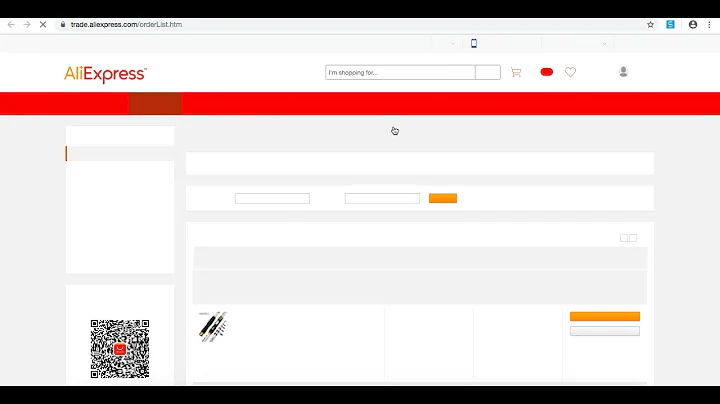Start and Scale a Drop Shipping Business: Ultimate Guide
Table of Contents
- Introduction
- What is Drop Shipping?
- The Benefits of Drop Shipping
- How to Start a Drop Shipping Business
- Finding a Niche
- Researching Suppliers
- Setting up an E-commerce Website
- Marketing and Advertising
- Customer Service and Order Fulfillment
- Common Challenges in Drop Shipping
- Tips for Success in Drop Shipping
- Pros and Cons of Drop Shipping
- Frequently Asked Questions (FAQs)
- What is the difference between drop shipping and affiliate marketing?
- How much can I earn from drop shipping?
- Do I need a lot of money to start a drop shipping business?
- How do I handle returns and refunds in drop shipping?
- Can drop shipping be done internationally?
- Conclusion
Introduction
Welcome to the world of drop shipping! In this article, we will explore the ins and outs of starting and running a successful drop shipping business. Whether you're a budding entrepreneur or someone looking for a flexible source of income, drop shipping offers an exciting opportunity to earn money online. We'll discuss what drop shipping is, the benefits it offers, and how to get started. We'll also cover common challenges you may encounter along the way and provide tips for success. So let's dive in and explore the world of drop shipping!
What is Drop Shipping?
Drop shipping is a business model where you sell products through your online store, but you don't have to worry about inventory or shipping. When a customer places an order, you simply forward the order to the supplier, who then ships the products directly to the customer. This means you don't have to invest in inventory upfront or handle the logistics of shipping. It's a popular business model because it allows for low start-up costs and flexible work arrangements.
The Benefits of Drop Shipping
Drop shipping offers several advantages over traditional retail models. First and foremost, it eliminates the need for inventory management. With drop shipping, you don't have to buy products in bulk and store them in a warehouse. This reduces the risk of unsold inventory and frees up your capital for other aspects of your business. Additionally, drop shipping allows you to offer a wide range of products without the hassle of stocking them yourself. You can easily expand your product offerings and cater to different customer needs. Furthermore, drop shipping gives you the flexibility to run your business from anywhere in the world. As long as you have an internet connection, you can manage your store and fulfill orders. This makes drop shipping an ideal option for digital nomads or those who prefer a remote work lifestyle.
How to Start a Drop Shipping Business
Now that we understand the basics of drop shipping and its benefits, let's discuss how to start your own drop shipping business. There are several steps involved, from finding a niche to setting up your store and marketing your products. Let's break it down step by step.
Finding a Niche
The first step in starting a drop shipping business is to find a profitable niche. A niche is a specific segment of the market that caters to a particular audience. It's important to choose a niche that you are passionate about and that has enough demand. Research different niches and identify products that are in high demand but with low competition. This will give you a better chance of success in a competitive market.
Researching Suppliers
Once you have identified your niche, the next step is to find reliable suppliers. Look for suppliers who offer quality products, competitive prices, and fast shipping. You can search for suppliers on online marketplaces or use supplier directories. Reach out to potential suppliers and ask for samples to assess the quality of their products. It's important to establish a good relationship with your suppliers as they play a crucial role in ensuring customer satisfaction.
Setting up an E-commerce Website
After choosing a niche and finding suppliers, it's time to set up your online store. You will need to choose an e-commerce platform that suits your needs. Popular options include Shopify, WooCommerce, and BigCommerce. Customize your store's design, add product listings, and set up payment and shipping options. Make sure your website is user-friendly and optimized for mobile devices.
Marketing and Advertising
Once your store is up and running, you need to market your products to attract customers. Devise a marketing strategy that reaches your target audience effectively. This may include social media advertising, content marketing, influencer collaborations, and search engine optimization (SEO). Utilize various marketing channels and track your results to determine what is working and what needs improvement.
Customer Service and Order Fulfillment
As orders start rolling in, it's important to provide excellent customer service and ensure efficient order fulfillment. Respond to customer inquiries promptly and address any issues or concerns they may have. Communicate with your suppliers on a regular basis to ensure timely fulfillment and delivery of orders. Monitor your inventory levels to avoid stockouts and be proactive in communicating any delays to your customers.
Common Challenges in Drop Shipping
While drop shipping offers many benefits, it also comes with its fair share of challenges. It's important to be aware of these challenges and be prepared to overcome them. Some common challenges in drop shipping include:
-
Supplier issues: Not all suppliers are reliable or offer quality products. It's crucial to thoroughly vet your suppliers and establish good relationships with them.
-
Inventory management: Since you don't have control over the inventory, it's important to closely monitor stock levels and communicate with your suppliers to avoid stockouts or delays.
-
Shipping complexities: Shipping times and costs can vary depending on the location of your suppliers and customers. It's important to set clear expectations with your customers and choose reliable shipping methods.
-
Marketing and competition: With the rise in popularity of drop shipping, the market is becoming increasingly competitive. It's important to have a solid marketing strategy and differentiate yourself from competitors.
Tips for Success in Drop Shipping
While drop shipping can be a challenging endeavor, there are several tips that can help increase your chances of success:
-
Choose the right niche: Select a profitable niche with enough demand but low competition. This will give you a better chance of standing out and attracting customers.
-
Build strong relationships with suppliers: Establish good relationships with your suppliers and communicate regularly. This will help ensure the quality and timely delivery of products.
-
Provide excellent customer service: Focus on providing exceptional customer service to build trust and loyalty. Respond promptly to inquiries and address any issues or concerns.
-
Continuously optimize your website: Regularly update and improve your website to enhance the user experience. Optimize your product listings, improve load times, and make your website mobile-friendly.
-
Stay adaptable and open to change: The e-commerce landscape is constantly evolving. Stay up to date with the latest trends and be willing to adapt your business strategies accordingly.
Pros and Cons of Drop Shipping
Before diving into drop shipping, it's important to consider the pros and cons:
Pros:
- Low start-up costs: You don't need a significant upfront investment to start a drop shipping business.
- Flexible work arrangements: You can work from anywhere with an internet connection and set your own schedule.
- Wide product selection: You have the flexibility to offer a variety of products without the need for inventory.
- Scalability: Drop shipping allows you to scale your business quickly as you don't have to worry about physical infrastructure.
Cons:
- Lower profit margins: Since you're not buying products in bulk, your profit margins may be lower compared to traditional retail models.
- Dependency on suppliers: Your business success relies on the reliability and efficiency of your suppliers.
- Customer service challenges: You may face challenges in managing customer expectations, especially with shipping times and product quality.
Frequently Asked Questions (FAQs)
-
What is the difference between drop shipping and affiliate marketing?
- Drop shipping involves selling physical products and fulfilling orders, while affiliate marketing involves promoting other people's products and earning commission on sales.
-
How much can I earn from drop shipping?
- Earnings in drop shipping vary depending on factors such as niche selection, product prices, marketing efforts, and customer demand. With the right strategies, it is possible to earn a substantial income.
-
Do I need a lot of money to start a drop shipping business?
- No, drop shipping allows you to start with minimal investment as you don't have to purchase inventory upfront.
-
How do I handle returns and refunds in drop shipping?
- It is important to have a clear return and refund policy in place. Communicate this policy to your customers and establish a process for handling returns and issuing refunds.
-
Can drop shipping be done internationally?
- Yes, drop shipping can be done internationally. However, there may be additional challenges such as shipping times and customs regulations to consider.
Conclusion
Drop shipping offers a unique opportunity to start and run your own online business with minimal investment. By following the steps outlined in this article and adopting best practices, you can increase your chances of success in the competitive world of drop shipping. Remember to choose the right niche, forge strong relationships with suppliers, provide excellent customer service, and stay adaptable to market trends. With dedication and hard work, you can build a profitable drop shipping business and enjoy the benefits of being your own boss. So take the leap and start your drop shipping journey today!
Highlights:
- Drop shipping is a business model where you sell products online without having to worry about inventory or shipping.
- Drop shipping offers advantages such as low start-up costs, flexibility, and a wide product selection.
- To start a drop shipping business, you need to find a profitable niche, research reliable suppliers, set up an e-commerce website, and market your products effectively.
- Common challenges in drop shipping include supplier issues, inventory management, shipping complexities, and competition.
- Tips for success in drop shipping include choosing the right niche, building strong relationships with suppliers, providing excellent customer service, continuously optimizing your website, and staying adaptable to change.
- Pros of drop shipping include low start-up costs, flexible work arrangements, wide product selection, and scalability. Cons include lower profit margins, dependency on suppliers, and customer service challenges.
- Drop shipping FAQs cover the differences between drop shipping and affiliate marketing, earning potential, start-up costs, handling returns and refunds, and international drop shipping.
- With dedication and hard work, you can build a profitable drop shipping business and enjoy the benefits of being your own boss.















